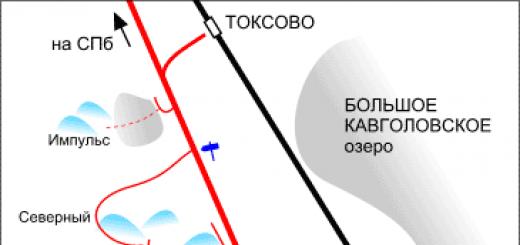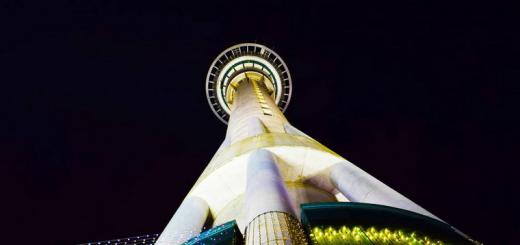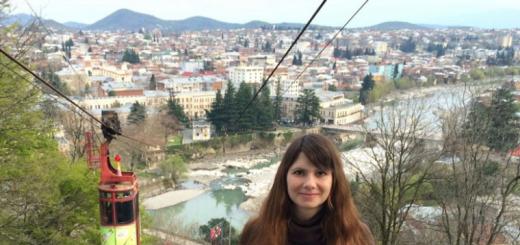The IAC announced the reason for the crash of the Saratov Airlines liner in the Moscow region. However, the pilots of the airline, on condition of anonymity, claim that it was a terrorist attack.
Icing Sensors Announced Cause Of Crash
By the evening of February 13, the main cause of the An-148 crash became known. As stated in the Interstate Aviation Committee (IAC), the full pressure sensors were iced up, as a result of which the information about the aircraft's speed on the indicators was displayed incorrectly.
Icing of the sensors, in turn, occurred due to the fact that their heating systems were turned off.
As the specialists found out, the emergency situation on board the fallen An-148 began to develop 2 minutes 30 seconds after takeoff. At this time, the plane was at an altitude of 1300 meters. The crash, according to the Moscow Interregional Transport Prosecutor's Office, occurred in the fourth minute of the flight.
However, it is not completely clear how the incorrect display of the speed could lead to such a rapid fall of the liner. Let us remind the readers that the crew did not manage to get in touch with the dispatchers and did not request an emergency landing.
"It was a terrorist attack"
As in any high-profile incident, it was not without unofficial assumptions.
Radio Liberty talked to the pilot of Saratov Airlines, who flew the Moscow-Orsk route several times, including with deceased captain aircraft by Valery Gubanov.
The pilot, on condition of anonymity, made a sensational statement.
"I believe that this is a terrorist attack, all the colleagues with whom I spoke after the tragedy are also inclined towards this,"- he said.
According to him, the maintenance of aircraft at Saratov Airlines is proceeding as expected, according to the regulations, the An-148 model is reliable in itself, and all emergency situations are well practiced by the crew. As a version, the interlocutor of Radio Liberty denies a piloting error or technical malfunctions.
The unnamed pilot draws attention to the fact that the debris from the plane was scattered for a kilometer, and the bodies cannot be identified without genetic examinations.
“If the plane collapsed from hitting the ground, the bodies and debris would lie side by side, compactly, in such cases, many of the dead are found in their seats. And here everyone is assembled in parts ... This means that there was a powerful explosion on board, otherwise they would not have been blown apart like that ”,- said the pilot of "Saratov Airlines".
Many people who have panic attacks hate flying. By the way, although I don't have panic attacks, I still can't stand airplanes.
So, this article will be useful to a lot of people. Well, except for the pilots or flight attendants themselves, who are specially trained how to behave in emergency situations. We read and remember.
The plane is considered one of the most safe views transport, however, and in it, passengers are trapped by dangers. What they are and what to do in order to minimize damage.
Fight on board
Fights on board the aircraft have become a frequent occurrence, both among our compatriots and among foreign tourists. This is explained, as a rule, by the fact that at the airport many get drunk in order to calm down the fear of a flight or simply to shorten the waiting time. Once in a confined space, someone simply falls asleep, and someone begins to look for reasons for conflict.
The most dangerous thing is on board a group of fans who strive to get the maximum adrenaline and, along with fights, arrange "pitching", that is, rush from one side to another. If there are less than 30 of them, it is not dangerous, otherwise the balance of the aircraft may be disturbed.
- After witnessing a fight on board, the first thing to do is to stay calm.
- All foreign airlines have so-called "marshals" on their crew - large stewards who are much better at pacifying riotous passengers than serving sandwiches.
- But in domestic companies there is no such position, so men should be ready to help the flight attendant if necessary.
Turbulence zone and air pockets
Turbulence refers to the mixing of several air streams with different temperatures and densities, as a result of which the aircraft can instantly descend or rise by several tens of meters.
Most often, this happens at an altitude of more than six thousand meters, while flying over the city, sandy beach or a lake, the surface of which is heated unevenly.
When the plane falls into a large air pit, all objects that are in the cabin and are not properly secured sharply soar upward, and then fall on the seated ones. In addition, if you do not strap on, you can get a bruise or even a fracture, hitting during the shaking that usually occurs when passing through a zone of turbulence.
- When boarding the plane, make sure that there are no heavy or sharp objects or loose luggage nearby.
- Even a pen in a jacket pocket can get dangerous, so it's best to pack it in a bag.
- In addition, be sure to buckle up, and if you get into a zone of turbulence, group as indicated in the passenger's memo.
Airplane fire
It is not uncommon for the passengers themselves to be the culprits of the fire on the plane, carelessly handling the fire or smoking on board. True, a fire can occur during takeoff or landing, and then the passenger has no more than three minutes to get out of the plane.
- First of all, remember that the plane is a huge flying fuel tanker, and it is strictly forbidden to use lighters or smoke on board.
- If there is a fire while on runway has already begun, try to leave the aircraft as soon as possible.
- To do this, when landing, remember where the emergency exits, count how many rows of chairs are from you to the exit in order to orient yourself even by touch.
- Do not inhale the smoke, walk bent over, or on all fours, put on a coat or jacket and get rid of synthetics in your clothes (including tights), since melting it causes the most severe burns.
- You should not take off your shoes, except for high-heeled shoes when entering an inflatable ladder, and even those should be held in your hands so that you can immediately put on shoes on the ground and not step on broken glass or plastic.
Decompression
Decompression, unlike most accidents, happens very quickly and, although it seems intimidating, is not a cause for panic. The loud noise that accompanies the exit of air from the passenger compartment can scare, but this is not the most dangerous thing. The plane quickly fills with fog and dust, it becomes difficult to breathe, and it rings in my ears. At this moment, the most important thing is not to panic, but to put on an oxygen mask and securely fasten it so that it does not fall off, even with a possible rolling or loss of consciousness. Be aware that the crew will immediately begin correcting the situation and the aircraft will descend sharply until the pressure in the cabin and outside equalizes, and then an emergency landing will be made at the nearest airport.
- At the first sign of decompression, put on an oxygen mask and then help others.
- Even if there is a child nearby, take care of yourself first, otherwise you may pass out and leave him without help.
Takeoff and landing accidents
It is not in vain that flight attendants ask passengers to fasten their seat belts and raise the backs of their seats during takeoff and landing. The most unexpected accidents occur precisely during these periods of flight.
- First of all, do not rely only on the instructions of the crew.
- Noticing that the flight is not going well (the plane is dropping sharply, one of the engines has quieted down or smoke has appeared in the cabin), buckle up, group up and get ready for an emergency landing, during which severe overloads are inevitable.
- As soon as the plane stops, passengers will be evacuated. At this moment, one should not succumb to panic, but everything must be done extremely quickly.
Hijacking
Hijacking cases are extremely rare, however, they quickly become known to the whole world. And although the chances that the flight Moscow-Antalya will be hijacked is negligible, it is still better to know the basic rules of behavior and survival in such situations.
- Do not stand out among other passengers, fulfill all the requirements of the criminals, and then the release group.
- Perform any actions (going to the toilet, opening luggage) only after receiving permission.
- During the assault, try to sit or lie on the floor or hide behind the back of a chair, do not express your attitude towards the invaders and do not try to cope with them on your own.
- After being released, be prepared for the next few hours to continuously answer questions from the police and security forces.
Landing on water
In an emergency, the plane can land on the water, but this does not mean that casualties are inevitable, since this is all aircraft prepared. The ship can be afloat for up to 40 minutes, and during this time everyone has time to leave it. In addition, modern aircraft are equipped with life jackets and rafts that inflate on their own in one minute.
- Before departure, find out in what position the plane is kept afloat - horizontally, with the tail or bow lowered into the water. Based on this, plan to which exit you will need to move.
- After splashdown, start with the help of the stewards to launch the self-inflating rafts. If the raft does not begin to inflate on its own, pull the handle of the air supply system located on the side of the raft.
P.S. And so that you do not become completely scared, let me defuse the situation a little:
- The crew get ready for landing! Flight mechanic, report on the situation!
- No left chassis!
— Emergency landing! Stewardess! Is there still a supply of booze on board?
- Yes!
- Give it to passengers so they don't worry!
- You have already given out once after takeoff, they are now rolling some kind of wheel down the aisle ...
As someone who has served a lot in the Air Force and has dealt with flight safety, I also wonder why such a competent commission to investigate the plane crash accused a highly professional crew of being unable to cope with an emergency on board.
Lost on the ground?
Apparently, the commission was never able to figure out what happened in 70 seconds of the flight.
"Before the plane crashed, the commander pressed the rudder pedals as if trying to get around an unexpected obstacle."
As you know, about a minute after taking off from the runway, the Tu-154-B2 gained an altitude of about 250 meters and a speed of about 360-370 kilometers per hour. Immediately after that, an "emergency situation" began to develop rapidly on board.
At a press conference on the work of the government commission, the head of the aviation safety service of the Armed Forces Russian Federation Sergei Bainetov said that “the radio exchange was extremely short. There was a special situation for 10 seconds ... ”That is, according to him, before that everything was going quite regularly. However, the analysis of the crew's radio traffic not only in the last seconds of the flight, but also on the ground, suggests the opposite. Andrei Krasov, First Deputy Chairman of the State Duma Committee on Defense, is also inclined to this point of view: "Something extraordinary was about to happen."
The Ministry of Defense of the Russian Federation, in turn, also reported on an emergency situation on board the Tu-154-B2 before the fall. What else turned out to be extraordinary on earth?
From the part of the investigation materials that got into the public domain, it follows that "the commander of the aircraft R. Volkov began to experience difficulties in determining his own position on the territory of the airfield", which was associated with his idea of the upcoming take-off course. Volkov allegedly did not understand from which of the two runways he was to take off. But the Sochi airport is equipped with backlit signposts for taxiway numbers and runways. According to experts, it is impossible to "get lost" there. In addition, Volkov was familiar with the airfield. Moreover, if the commander of the airliner was lost on the ground, a take-off ban should immediately follow, which did not happen. So, everything was routine, or is it hidden from the public that this is not so? But then there are even more questions.
In the materials of the investigation about the violation of spatial orientation (situational awareness), it is said that it is very difficult for even a beginner to get lost in 70 seconds of flight at an altitude of up to 300 meters. And at the helm was an experienced pilot who flew, we repeat, the Tu-154 for 1900 hours. Volkov constantly performed takeoff with pitch-up, which could not be done otherwise than by artificial horizon. Nearby was a trained full-time crew that monitored the situation and would react to deviations of the instruments. It is hard to believe that their testimony was ignored for several tens of seconds, and collectively. The actual self-elimination of the co-pilot and navigator from ensuring a safe flight cannot be explained either. The ex-chief of the Air Force flight safety (1997-2002), honored military pilot Major General of Aviation Boris Tumanov is convinced that two professionals could not lose their spatial orientation, and the catastrophe happened due to erroneous (that is, deliberate) actions of the crew. Unless, of course, his spatial orientation (situational awareness) was not disturbed at that time.
Similar cases were investigated by the British Air Force doctors. Violation of spatial orientation can occur with parameters exceeding normal for the life of the flight crew. This is a temperature from + 20 ° and an overload of more than 1 unit. But the work of the Tu-154-B2 crew corresponded to the usual parameters of life. Therefore, the violation of spatial orientation, to put it mildly, is problematic. However, the state commission made just such a conclusion. Why?
In the materials of the investigation it is said that this “could have been facilitated ( but could not help! – I. S.) the resulting excessive neuropsychic stress, due to a combination of a number of situational professional and psychological stress factors against the background of natural emotional and physiological fatigue; lack of stable skills in the distribution of attention and maintaining the given flight parameters at the stage of takeoff and climb. " And this is for a professionally trained aircraft commander and crew?
"Direct" indication of the aircraft's attitude by the roll is displayed on the flight command device (CP), it is impossible not to notice it. Then where did it come from that it caused difficulties for a particular aircraft commander? For a young pilot during retraining on a simulator - maybe. And Roman Volkov, we emphasize once again, was an experienced pilot. In addition, in case of checkpoint failure, there is a backup device - AGR-72 artificial horizon.
By the way, if a "special situation" arose on earth, then why the persons in charge air traffic in the airport area, did not provide the crew with timely assistance? In the materials of the investigation, it is said about this: "The accident was facilitated by omissions in the control of the organization of flights, objective control and flight methodological work of the leadership of 800 (AB) ..."
Isn't it too light: "The omissions ... of the leadership of the 800th Air Base contributed to the accident." This is not a vegetable base or even a Voentorg base. The flight unit has a long and glorious history, it is a living organism formed long ago Air force... The elite special purpose division, performing state tasks, has established itself as a responsible and trouble-free unit. A system of reliable operation of aviation equipment and training of aviation personnel was laid there. Strict control has been established for ensuring accident-free operation and flight safety on the ground and in the air. Under Serdyukov, the 8th hell (OH) was changed into the 800th (AB), lowering its status, but not cutting its responsibility. Of course, there may be some drawbacks in the training of the crew. But as an expert, I do not believe in the principled ones, noted by the commission and resulting in a catastrophe.
Obvious contradictions can be traced in the assessments of the commander's activities. From the materials of the investigation it follows: “R. Volkov was not ready to fly according to psychological, professional and physiological criteria as a pilot, as a ship commander, as responsible for the safety of passengers. " But before that, completely different assessments were heard. “The crew of the crashed Tu-154-B2 was ready for the flight, the level of its qualifications corresponded to the fulfillment of the flight task,” the same Bynetov stated in one of his interviews. He was supported at that moment by the commander-in-chief of the Aerospace Forces, Colonel-General Viktor Bondarev: "Volkov is an excellently trained military pilot of the first class ..."
I also cannot imagine that the country's leadership could appoint an unprepared flight crew for such a responsible task. As Boris Tumanov said, "the commander of the Tu-154-B2 crew with such professional training and flying on the Tu-154 of 1900 hours cannot get into a situation of violation of spatial orientation, especially on takeoff, when he was piloting the plane by instruments."
Mirage on the course
During the search operation, more than 200 fragments of the crashed aircraft were found, including the side covering of the fuselage measuring 3.5 by 4.5 meters with portholes, the tail section with engine pieces, a separate engine, landing gear ... 20 bodies and numerous remains of air passengers were raised ... This spread occurs only when an aircraft is destroyed in the air.
Although the point of mass accumulation of debris was six kilometers from the coastline, where the depth was from 80 to 100 meters, the debris and personal belongings were found over a fairly large area, some of them 12-14 kilometers away. In this regard, serious experts talk about the possibility of an explosion on board. This means that a version of a terrorist attack is not excluded.
According to an expert in the aerospace field, Vadim Lukashevich, the investigation turned out to have too little information. Therefore, it is difficult to talk about any specific causes of the disaster.
Experts participating in the investigation found that the crew commander, before the plane crashed, pressed the rudder pedals, which are usually not used during takeoff. As if trying to get around an unexpected obstacle. At the same time, the commission rejected the option of external influence and technical malfunction of the liner. One gets the impression that there really was some kind of obstacle in front of the plane, perhaps a flock of birds or even a mirage. However, experienced pilots believe that there is not enough evidence to speak of a pilot's error.
“The plane crashes on takeoff very rarely, especially of this class. It has three motors and is very reliable. It could not be that someone flew up to him, he could crash into something. And then there was a sharp drop, it happens when something abnormal happened, something exploded, something fell off ... The pilot could turn on the distress signal, but this also did not happen. I cannot sin on the crew, and the equipment does not break down so immediately, '' instructor-pilot Andrei Krasnoperov shared his thoughts. - If the liner fell intact, it would simply disappear into the water, and an oil slick would form at the place of its fall, then fragments would emerge ... And then they even found a man who suffered from debris in the coastal zone, and only then the remains of the plane ... All this suggests that parts of the liner fell randomly. "
Apparently, the low quality of the initial data (their absence) did not allow the participants in the investigation to thoroughly reconstruct the entire scheme of the development of an emergency situation on board the Tu-154-B2 and, accordingly, come to a common opinion.
An additional problem was the flight recorder, created in the 80s and which is essentially a reel-to-reel tape recorder of those years. It was not damaged, but there was no equipment or specialists left in the Research Center for Operation and Repair of AT of the Air Force of the Ministry of Defense of the Russian Federation to obtain full information from it. I had to seek help from the IAC, but the transcript of the recording added a little to the investigation.
Let's reproduce those last 10 seconds of the crew's activity before the plane crashed into the Black Sea through some versions and opinions. The commission to investigate the Tu-154-B2 catastrophe stated: at the 73rd second, hitting the sea surface with its left wing, it fell apart and sank. Let me emphasize: into parts, but not into fragments, as it turned out in reality. At the time of the collision, the left bank was about 50 degrees, the indicated speed was 540 kilometers per hour. The liner managed to fly over the sea 1270 meters. Where did the numerous fragments come from at such a low flight speed and low altitude?
Initially, there were 15 or even more versions of the disaster. When we received data from two "black boxes", it became half as much. But the remaining versions have not yet been made public by officials. “It is impossible to say about one reason for this aviation accident, - emphasized Sergey Bainetov. “These reasons lie in the area of the human factor, aviation technology, and external conditions.” According to him (before the commission made its final conclusions), a certain mechanical effect could have influenced the development of a special situation on board. But this message also adds nothing and does not say anything specifically. All from the area of assumptions that non-specialists could make. And what actually caused the disaster, the relatives of the victims, the Russian public do not know. "The investigation is over, forget ..."
Almost a year has passed since the tragic event. But even after this time, personally, my soul did not become easier and calmer. As a pilot and an expert, I feel an understatement, some kind of silence, a lack of intelligible explanations for a number of screaming facts about the behavior of the aircraft and the crew on that early Sochi morning on December 25.
The conclusions of the state commission left not only questions to which no answers were received, but also logical contradictions and inconsistencies. Maybe it is beneficial for someone that the Tu-154-B2 disaster remains a secret behind seven seals. But not the Russian public. Truth must prevail sooner or later.
Igor Semenchenko,
Independent expert in the field of flight and aviation safety, First Deputy Chief of Operations Directorate of the Air Force General Staff (1997-2003), Major General
Until the plane's "black boxes" have been deciphered, it is too early to talk about the exact reasons for the crash, but various details and assumptions appear in the press. Possible versions included a piloting error, equipment failure, foreign objects entering the engine, and even a terrorist attack. Experts commented on the alleged reasons for the crash of the Tu-154.
Version of the terrorist attack
This version was immediately rejected by the deputy editor-in-chief of the Aviapanorama magazine, Honored Military Pilot of the Russian Federation Vladimir Popov. According to him, the plane most likely crashed on the water surface, and the debris was blown away by the current. The scattering of debris is not at all a sign that the liner was scattered in the air. The chairman of the board of the Aviation Legends Foundation, honored test pilot Valery Vanshin, agrees with this opinion.
“The area where the debris is scattered is not that big, rather it was just blown away by the current. It is necessary to look in which direction all the details have floated out - in one or in some radius, ”he explained.

Foreign objects entering the engine
The version with foreign objects entering the engine also looks fantastic. As a rule, birds get into the engine, but even such an incident cannot lead to the fall of a three-engine Tu-154 aircraft.
“Yes, there were birds. Yes, the engine was destroyed. But this did not lead to either the explosion of the aircraft, or to the catastrophic destruction of the entire aircraft. This is highly unlikely. Even a large bird hitting a three-engine aircraft could not cause such a fatal end, ”said Wanshin.
In addition, the plane crash happened in the dark, at about five in the morning. During this time, birds usually do not fly.
“Purely hypothetically, it is possible that someone once launched a large enough drone, piloted it, wanted, maybe, to shoot some kind of story, but collided with an airplane. And it would not have led to such a critical result. This should also be immediately removed from the discussed versions, ”Popov added.

Aircraft overload
Wanshin also doubts that the plane was overloaded. Despite the fact that the head of the Fair Aid Foundation, Yelizaveta Glinka (Doctor Liza), who was on board, was carrying gum cargo for hospitals in Syria, and other passengers - personal belongings, most likely, the weight norms were not exceeded.
“The military never violates the rules for overloading. They are very strict about this. I don't think there was an overload, ”the pilot said.

Piloting error
Whether the crew is to blame is a difficult question. The liner was piloted by the first class pilot Roman Volkov, who flew more than three thousand hours during his career. This is enough experience for a pilot, especially one working for the Ministry of Defense.
“Any specialist of any qualification can be the cause of a disaster. Three thousand hours is a long flight time. Not so much to talk about very big, but for the military it is very decent. Experience suggests that [mistakes can] be made by people of all ages and all backgrounds, including test pilots. This is a matter of chance, the circumstances of the flight, and they can be very unpredictable, ”said Vanshin.

Technique failure
According to Popov, a pilot error may take place, but it was most likely triggered by external factors. The expert believes that the cause of the disaster was a technical failure, which entailed a chain of fatal events.
“My opinion, one of the versions: somewhere there was a technical failure. But he was not alone, he could only provoke a chain of events that led to the catastrophe. There is not one emergency situation, there were several of them. They happened one after another and snowball fell on the crew. This led to a great lack of time in organizing all the actions that the flight crew is supposed to do in this situation. A critical situation came, people simply did not have time to react, ”the pilot said.
The situation was complicated by the dark time of the day, as well as the fact that the flight took place over the sea - the crew did not see the horizon and earthly lights. I had to navigate only by the readings of the device.
The commander of the A320, the pilot of Aeroflot, Andrey Litvinov, agrees with the same opinion. He stressed that, most likely, it was the failure of the equipment that initially led to the abnormal situation on board. And the accompanying factors - the time of day, the location of the airfield near the coastline and the critical stage of the flight (takeoff), could already lead to an error by the crew, who was trying to cope with the situation.
“It is very similar to a technical failure, and so serious that the crew did not have time to report to the dispatcher. He fought rejection. This is a critical phase of flight - approach and take-off. At this point, when the aircraft is taking off, the landing gear and flaps are retracted. Perhaps there was a flap desynchronization - the plane falls to one side and if you do not react in time, the plane may crash, ”Litvinov said.
He noted that the described flap situation is just one of hundreds of examples of equipment failure that could occur during takeoff.

Eyewitness testimony of the tragedy
A Coast Guard officer, who witnessed the crash of a Tu-154 aircraft in the Black Sea, testified to the investigation in favor of the version of the pilots' mistake. the plane was flying low and with an unnaturally raised nose. Instead of climbing, the plane began to quickly descend to the surface of the sea, as if it wanted to land on it.
Popov considered that these testimonies were not entirely correct. The plane, which took off from the Adler airfield, gained an altitude of about 200 meters by the second minute, so it would be problematic to see it, especially at night.
“At that distance, when the plane had already taken off from the [runway] strip - and I know Adler airfield well - your eyewitness could not see that after takeoff the plane struck the water with its tail part and continued to climb further, because we were flying off kilometers 2.5 to the coastline. At this time, we had already removed the landing gear and flaps, gained height within 200 meters. It was night, how could he see it? The plane, most likely, was already striking clouds at this time, not water, ”the expert said.
At the same time, Vanshin noted that such a position of the aircraft, as described by an eyewitness, can only be explained by a drop in speed when making a maneuver, for example, a turn. The moment of the collision with the water coincided with the raising of the aircraft's nose.
A similar version was announced in the media. According to an anonymous source in the security forces, the Tu-154 crashed at a speed of 510 kilometers per hour while maneuvering to the right.
“The disaster happened when the pilots were removing the mechanization (in the extended state, it increases the lift of the wing). At the same time, for still unclear reasons, the plane was going with a large pitch angle.<…>Apparently, there was his stall from the echelon during a maneuver to the right. As a result, at the end of the turn, he collided with the water surface with a left bank at a speed of about 510 kilometers per hour, "- explained

Still, the human factor?
The human factor can cause a catastrophe, even if the guilt of the pilots is excluded, Popov said. For the safety of the flight, not only the person sitting at the helm is responsible, but also the members of the so-called ground crew - mechanics, technicians, dispatchers and even those who refuel the planes.
“And only on the top of this mountain is the crew. The human factor implies that this term will necessarily manifest itself, whether we like it or not, ”the pilot explained.
You can endlessly guess about the reasons, but before insisting on any version, you should wait until the end of the investigation, experts agree. The divers have already managed to lift the "black boxes" from the bottom. According to Popov, they have already been delivered to the Central Research Institute of the Air Force in Lyubertsy near Moscow. Within a few days, experts will be able to confirm or deny this or that version of the crash.
The commander of the crashed Tu-154 managed to give a signal about an emergency situation on board
© Illustration by IA "Rosbalt"
The commander of the Tu-154 crashed in the Black Sea, Roman Volkov, was able to report problems on board, but there is very little information. This was stated by the head of the Aviation Flight Safety Service of the RF Armed Forces Sergey Bainetov.
“I can say that the radio traffic was extremely short. You can imagine that the situation developed in 10 seconds. What can be said in 10 seconds? .. Therefore, the analysis of the commander's phrase speaks of the beginning of a special situation, it does not tell us anything else, "RIA Novosti quotes him as saying.
According to Bainetov, the entire flight took about 70 seconds. " Maximum height, which we determined from parametric information, was about 250 meters, at this echelon the speed is within 360-370 kilometers per hour, ”he said.
So far, it is too early to even talk about what the angle was when it collided with the water surface.
“There are certain data, but nevertheless, you see, they are not entirely accurate. There is video information. I repeat that we are in the process of analyzing and combining all these numerous factors, ”he replied to the question that, according to the testimony of some eyewitnesses, the nose of the plane was heavily lifted up before the fall.
“I cannot yet judge the reliability of this information. I want to say that a lot of eyewitnesses offer their services, indeed, somehow everyone reacted with understanding to this tragedy ... All this is checked, of course, and is checked against the objective information available, ”he concluded.
On December 25, the Tu-154 plane crashed in the Black Sea a few minutes after taking off from the Adler airport. 92 people died. On the fact of the crash of the Tu-154, a criminal case was initiated under Art. 351 of the Criminal Code of the Russian Federation (violation of flight rules, resulting in grave consequences).











